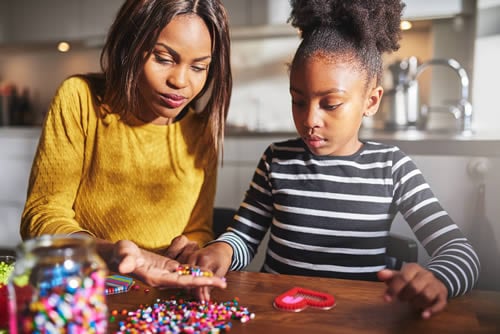Many of us take our ability to speak for granted, only stopping to consider how useful this is when a sore throat or toothache makes it tricky for a short while. But for some children with special needs, expressing themselves verbally is overwhelmingly difficult or even impossible. How can families and teachers help them to improve or find other ways to communicate?
SEN Tutor Sammie discovered a love of working with children with SEN while she was still training to be a teacher. She enjoyed it so much that after graduating, she went on to spend a number of years working in a special school, helping students with severe needs such as autism, Down’s syndrome and global developmental delay. She now works on a one-to-one basis with children right across the spectrum of need.
Non-Verbal Children are Intelligent

“There can be different reasons why a child is non-verbal and in my experience, it’s mostly neurological,” she offers. “There are some students who chose not to speak but that is perhaps because they’re overstimulated and anxious. But it’s very important to remember that just because someone is non-verbal, it doesn’t mean they’re not intelligent or that they don’t understand things.”
Helping a child to begin to communicate usually takes a long time, Sammie cautions. To start with, she says, she might offer a student a simple choice – for example, do they want to do gluing or would they prefer cutting paper? Showing them the glue stick and the scissors illustrates the two options. Repeating this time and time again, she points out, gradually teaches the young person cause and effect. If they choose one item they get this result, if they choose the other, something different happens.
Using Pictures and Symbols

The next stage might be using images or ‘PECS’ – a picture exchange communication system – with a pupil. “As an example, one boy I worked with loved bubbles,” she recalls. “I started him off with just a picture of bubbles which he had to hand to me in order to get them. After a while, I gave him the picture that represented me. He learned to hand both cards to me to tell me to get the bubbles. Further down the line, I introduced a verb so that he could say, ‘Sammie give bubbles’.”
Sammie has noticed that parents are sometimes worried that using pictures to communicate will become a substitute for speech. She has to reassure them that this method is actually more like to encourage speech. The same is true for sign language – Makaton is one of the better-known systems – which some teachers also use with non-verbal kids.
Sharing Information Between Home and School

It’s a good idea, she adds, if parents use the same techniques at home, though she admits this might be difficult amid the hurly-burly of family life.
“Even so, it’s very important, to also model the language, saying the words aloud,” she points out. “This increases the child’s exposure to language and boosts their understanding of the spoken word. You can do it in everyday situations at home – saying, ‘spoon’, for instance, when you hand the child their cutlery at the dinner table. “
Non-Verbal Children Can Surprise You With Their Knowledge

“Some children use a tablet to help them speak,” she continues. “They can point to pictures on the screen in a similar way to communicate. I had one student who loved playing on his iPad and we were astonished to find out how many words he knew when he started using it in that way.”
Although progress is often slow, it’s crucial that teachers and parents acknowledge when a child achieves something. In doing so, it’s important, Sammie cautions, to be mindful of the young person’s personality as too much gushing praise might make some children anxious. Better, she suggests, to show them you have understood what they’ve communicated, saying something like, ‘I see, you want me to give you some juice’.
Helping children to communicate in whatever way they can, she says, reduces frustration and challenging behaviour.




